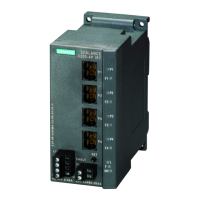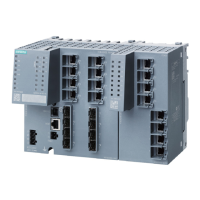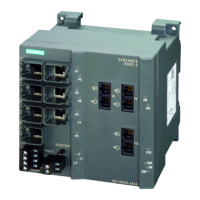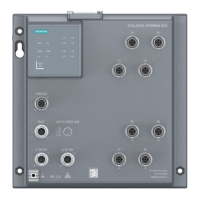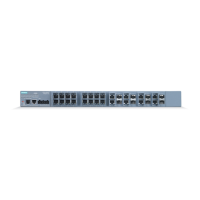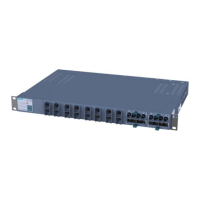Configuration using Web Based Management and Command Line Interface
4.5 The Switch menu
SCALANCE X-300 / X-400
Configuration Manual, 10/2014, C79000-G8976-C187-22
261
By entering a number, specify the number of received loop detection frames as of which a
loop is assumed.
If the port receives more loop detection frames than specified, the port no longer forwards
the loop detection frames.
Specify how the port will react if a remote loop occurs. Select one of the two options from the
drop-down list:
● No reaction:
A loop has no effect on the port.
● Disable port:
The port is blocked.
Specify how the port will react if a local loop occurs. Select one of the two options from the
drop-down list:
● No reaction
A loop has no effect on the port.
● Disable port
The port is blocked.
This box shows whether loop detection is enabled or disabled for this port.
This box shows the receiver port of the loop detection frame that triggered the last reaction.
This box shows the VLAN-ID of the loop detection frame that triggered the last reaction.
This is only possible if you have selected "VLAN Support Enabled" on the "Loop Detection
Configuration" page.
After a loop in the network has been eliminated, click this button to reset the port.
If the "Loop Detection" function detects a loop, this is signaled by the fault LED, the signaling
contact and an appropriate message text. The message texts are displayed using the same
signaling method that you configured for the alarm event "Loop Detection State Change",
see section "Agent Event Configuration (Page 106)".
Possible signaling methods are e-mail, trap, entry in the log file or on the syslog server.

